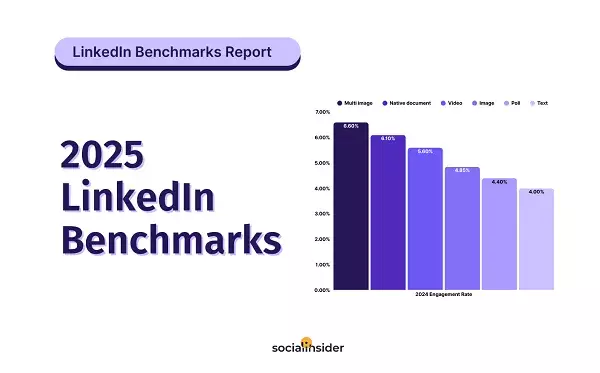As the digital landscape evolves, so too does the manner in which brands engage with their audiences. LinkedIn, a platform traditionally viewed as a bastion for conservative corporate communication, has seen a fundamental shift in user interaction over the past year. This transformation can be largely attributed to developments within competing networks, particularly Twitter, which has undergone significant changes that have left many brands scrambling for stable ground. This uncertainty has propelled LinkedIn into a more central role in professional networking, driving brands to reassess their strategies and reallocate their marketing efforts in a bid to capitalize on this resurgence.
Data from Socialinsider, which analyzed one million LinkedIn posts spanning 9,000 company pages, reveals critical insights into user engagement that could dramatically reshape content strategies. By diving deep into performance metrics, Socialinsider offers a treasure trove of information tailored for brands eager to up their game on this professional platform. Their findings underscore a singular truth: engagement does not come without intention or understanding of the dynamics at play.
The Engagement Landscape: Carousels vs. Video
Among the findings, one trend stands out decisively: carousel posts drive the highest levels of user engagement. This challenges conventional wisdom espoused by LinkedIn itself, which asserts that video content is the reigning king with 1.4 times higher engagement than other formats. The disparity might arise from the nature of the data samples used—Socialinsider focuses solely on company pages, while LinkedIn’s broader analysis incorporates individual profiles as well.
Carousel posts, which allow users to swipe through multiple images or documents within a single update, present a compelling case for engagement. Their interactivity invites users to participate actively rather than passively consume content. Coupled with document attachments, carousels create a narrative structure that resonates well with LinkedIn’s professional audience. They have been effective in not only catching users’ attention but also fostering deeper connections through storytelling.
However, the conversation does not end at carousel posts. Video content remains a formidable player in the engagement realm, especially as consumers increasingly seek dynamic and visually-rich content. This alignment with user preferences for visual media amplifies the necessity for brands to invest thoughtfully in video production. Socialinsider’s report indicates that while films are clearly impactful, the extent might vary based on audience demographics and context of usage.
Understanding Post Formats and Audience Dynamics
The array of post formats available on LinkedIn—polls, images, and articles—serves multiple purposes but is not created equal. According to the report, polls emerge as tools for garnering impressions, indicating their worth as engagement bait. Nevertheless, the rise of image posts cannot be overlooked either. LinkedIn’s recent updates to link previews have resulted in a diminished presence for links, nudging many brands toward iconic image posts where critical content can be strategically placed in the first comment section.
This evolution challenges brands to adapt to a rapidly changing visual landscape. Fulfilling your audience’s need for concise information while still engaging them meaningfully lies at the heart of effective content strategy. Brands should not only focus on the quantity of posts but also thoughtfully consider the quality and relevance of their content to their target audiences.
Furthermore, smaller company pages have reported an impressive uptick in follower growth, a phenomenon that suggests a democratization of visibility on the platform. As larger brands continue to compete for attention, nimble strategy and tailored messaging could allow smaller players to carve out significant niches of influence.
The Road Ahead: A Strategic Approach
In light of these insights, the need for a dynamic and data-driven approach to content strategy on LinkedIn becomes apparent. As businesses and professionals navigate through the digital landscape, acknowledging the nuances of various content types, audience preferences, and engagement tactics will be essential for achieving success.
Whether companies choose to double down on carousel posts, invest in high-quality video content, or strategically employ image posts, the bottom line remains clear: engagement is not merely a function of the content type but a relational dynamic forged through understanding and insight. Brands that prioritize genuine connection, craftsmanship, and creativity in their LinkedIn strategies will be the ones to thrive in an ever-evolving professional network.

